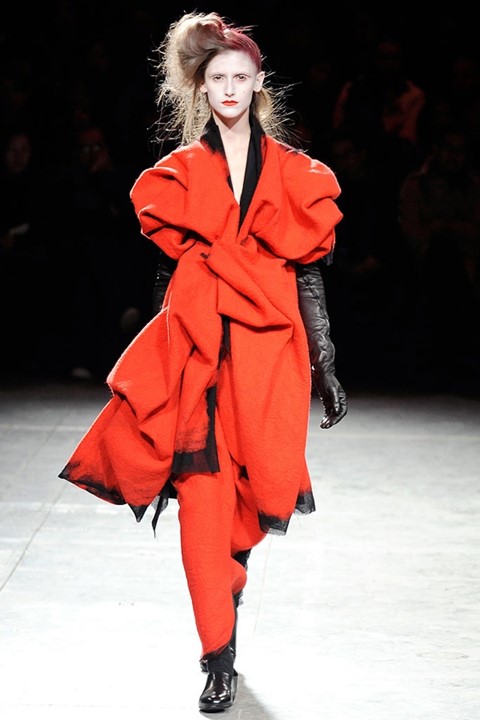When fabric is left to age for a year or two, it naturally contracts, and at this point it reveals its charm. The threads have a life of their own, they pass through the seasons and mature...
"When fabric is left to age for a year or two, it naturally contracts, and at this point it reveals its charm. The threads have a life of their own, they pass through the seasons and mature. It is only through this process that the true appeal of the fabric is revealed. In releasing one collection after the next on a six-month cycle, it is impossible to design clothing from fabric that has been allowed to age. The intense jealousy I occasionally feel towards used clothing comes from this fact. It was in just such a moment that I thought, "I would like to design time itself".
Human beings, whether young or old, have an innate desire to be understood; they build things and they speak in order to make their presence known. In this sense my work might be considered the epitome of some gaudy attempt to attract attention... [In] terms of a reaction to the growing environmental crisis, I felt that screaming out for ecological solutions and volunteer work would not be nearly as effective as the complete disposal of all man-made edifices, all cobbled-together explanations, and all the mountains of garbage. Or, to take it one step further, it seemed the best thing one could do for the sake of the earth would be to die on the spot. Though they pour toxic waste into the rivers, humans will only pay attention to it on the day the dead fish rise to the surface."
"Though they pour toxic waste into the rivers, humans will only pay attention to it on the day the dead fish rise to the surface"
Yohji Yamamoto highlights the biographical and almost identifiable emotion brought on by a second-hand, vintage or antique piece of clothing. They touch a piece of our past, a personification of those who have worn them. Indeed, it was Coco Chanel who once stated, “old clothes are like old friends.” However the sustainable appeal of re-worked and re-used fabrics is more relevant than ever before, with designers realising the global impact of their fabric choices and sartorial actions. Ethical clothing underpins a bigger picture, acting as a catalyst for environmental change. Sandy Black’s new book, The Sustainable Fashion Handbook, tells this story. From the Katherine Hamnett printed T-shirt, to Vivienne Westwood’s stance against global warming, the author questions the sustainability of fashion and its key players.
Yohji Yamamoto's extract from his 2010 biography appears in The Sustainable Fashion Handbook published by Thames & Hudson.
Text by Mhairi Graham
